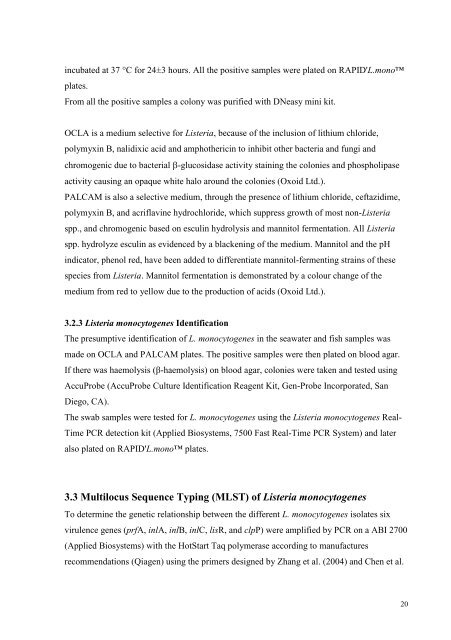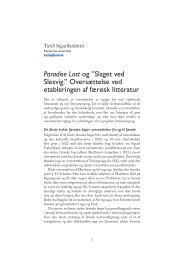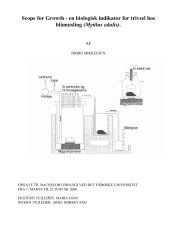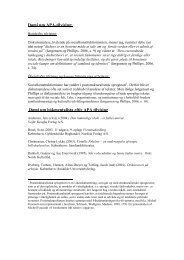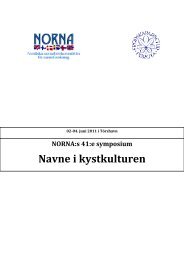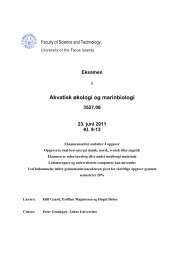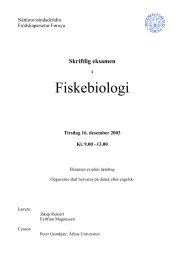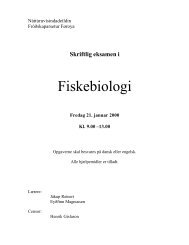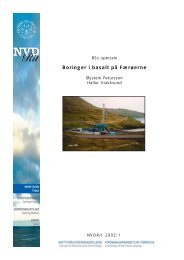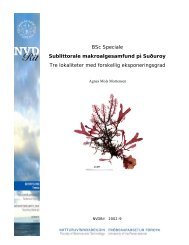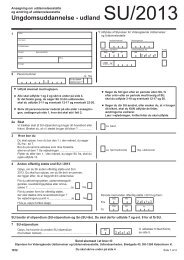Infectious Pancreatic Necrosis Virus (IPNV) - Fróðskaparsetur Føroya
Infectious Pancreatic Necrosis Virus (IPNV) - Fróðskaparsetur Føroya
Infectious Pancreatic Necrosis Virus (IPNV) - Fróðskaparsetur Føroya
Create successful ePaper yourself
Turn your PDF publications into a flip-book with our unique Google optimized e-Paper software.
incubated at 37 °C for 24±3 hours. All the positive samples were plated on RAPID'L.mono<br />
plates.<br />
From all the positive samples a colony was purified with DNeasy mini kit.<br />
OCLA is a medium selective for Listeria, because of the inclusion of lithium chloride,<br />
polymyxin B, nalidixic acid and amphothericin to inhibit other bacteria and fungi and<br />
chromogenic due to bacterial -glucosidase activity staining the colonies and phospholipase<br />
activity causing an opaque white halo around the colonies (Oxoid Ltd.).<br />
PALCAM is also a selective medium, through the presence of lithium chloride, ceftazidime,<br />
polymyxin B, and acriflavine hydrochloride, which suppress growth of most non-Listeria<br />
spp., and chromogenic based on esculin hydrolysis and mannitol fermentation. All Listeria<br />
spp. hydrolyze esculin as evidenced by a blackening of the medium. Mannitol and the pH<br />
indicator, phenol red, have been added to differentiate mannitol-fermenting strains of these<br />
species from Listeria. Mannitol fermentation is demonstrated by a colour change of the<br />
medium from red to yellow due to the production of acids (Oxoid Ltd.).<br />
3.2.3 Listeria monocytogenes Identification<br />
The presumptive identification of L. monocytogenes in the seawater and fish samples was<br />
made on OCLA and PALCAM plates. The positive samples were then plated on blood agar.<br />
If there was haemolysis (β-haemolysis) on blood agar, colonies were taken and tested using<br />
AccuProbe (AccuProbe Culture Identification Reagent Kit, Gen-Probe Incorporated, San<br />
Diego, CA).<br />
The swab samples were tested for L. monocytogenes using the Listeria monocytogenes Real-<br />
Time PCR detection kit (Applied Biosystems, 7500 Fast Real-Time PCR System) and later<br />
also plated on RAPID'L.mono plates.<br />
3.3 Multilocus Sequence Typing (MLST) of Listeria monocytogenes<br />
To determine the genetic relationship between the different L. monocytogenes isolates six<br />
virulence genes (prfA, inlA, inlB, inlC, lisR, and clpP) were amplified by PCR on a ABI 2700<br />
(Applied Biosystems) with the HotStart Taq polymerase according to manufactures<br />
recommendations (Qiagen) using the primers designed by Zhang et al. (2004) and Chen et al.<br />
20


